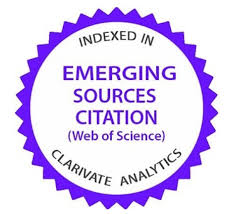The Use of Artificial Intelligence and the Processing of Biometric Data by Law Enforcement Authorities
DOI:
https://doi.org/10.35295/osls.iisl.2398Keywords:
Artificial Intelligence, Biometric Data, Data Protection, Public Safety, Artificial Intelligence Regulation, HarmonizationAbstract
This research paper explores the increasing use of Artificial Intelligence (AI) and biometric technologies by public administration and law enforcement authorities, and the complex ethical and legal implications that this entails. Initially, it examines the need to reconfigure legal safeguards in the face of the emergence of AI in public administration, recognising the inadequacy of the current regulatory framework and the need to adopt proactive policies to ensure the ethical and respectful use of AI. It then explores the path towards a responsible use of AI and biometrics, considering the different types of biometric data processing and their lawfulness bases, with a particular focus on the complexity of the ‘public interest’ justification. The study addresses the need for regulation and regulatory harmonisation to establish clear limits, requirements and safeguards for the processing of biometric data, as well as the importance of transparency, security and guidelines for data protection authorities. The necessary differentiation of the types of biometric data processing is further explored, analysing whether surveillance control activities are well differentiated from biometric authentication and verification. Finally, final reflections are presented on the need for specific regulation and the reconfiguration of legal safeguards to ensure a responsible use of biometric data.
Downloads
Metrics
Global Statistics ℹ️
|
262
Views
|
166
Downloads
|
|
428
Total
|
|
References
Agencia Española de Protección de Datos (AEPD), 2020. Informe Jurídico 36/2020 [en línea]. Disponible en: https://www.aepd.es/documento/2020-0036.pdf
Agencia Española de Protección de Datos (AEPD), 2023. Guía sobre tratamiento de control de presencia mediante sistemas biométricos [en línea]. Noviembre. Disponible en: https://www.aepd.es/guias/guia-control-presencia-biometrico.pdf
Carlón Ruiz, M., 2024. Utilización de sistemas de inteligencia artificial por administraciones públicas: un sistema propio de garantías como requisito imprescindible para su viabilidad [en línea]. Ponencia presentada en el Congreso AEPDA 2024. Disponible en: https://congresoaepdavigo2024.es/wp-content/uploads/2023/12/Ponencia-M-Carlon-LA-ADMINISTRACION-PUBLICA-ANTE-LA-INTELIGENCIA-ARTIFICIAL.pdf
Caruana, M., 2017. The reform of the EU data protection framework in the context of the police and criminal justice sector: harmonisation, scope, oversight and enforcement. International Review of Law, Computers and Technology [en línea], 33(3). Disponible en: https://doi.org/10.1080/13600869.2017.1370224 DOI: https://doi.org/10.1080/13600869.2017.1370224
Castellanos Claramunt, J., 2023. Sobre los desafíos constitucionales ante el avance de la Inteligencia Artificial. Revista de Derecho Político [en línea], 118. Disponible en: https://doi.org/10.5944/rdp.118.2023.39105 DOI: https://doi.org/10.5944/rdp.118.2023.39105
Cohen, J.E., 2012. Configuring the Networked Self: Law, Code, and the Play of Everyday Practice. Yale University Press.
Comité Europeo de Protección de Datos (CEPD), 2022. Directrices 05/2022 sobre el uso de la tecnología de reconocimiento facial en el ámbito de la aplicación de la ley [en línea]. Disponible en: https://www.edpb.europa.eu/our-work-tools/our-documents/guidelines/guidelines-052022-use-facial-recognition-technology-area_en
Comité y Supervisor Europeo de Protección de Datos (CEPD), 2021. Dictamen conjunto 5/2021 sobre la propuesta de Reglamento del Parlamento Europeo y del Consejo por el que se establecen normas armonizadas en materia de inteligencia artificial (Ley de Inteligencia Artificial) [en línea]. 18 de junio. Disponible en: https://www.edpb.europa.eu/system/files/2021-10/edpb-edps_joint_opinion_ai_regulation_es.pdf
Cotino Hueso, L, 2022. Transparencia y explicabilidad de la inteligencia artificial y «compañía» (comunicación, interpretabilidad, inteligibilidad, auditabilidad, testabilidad, comprobabilidad, simulabilidad…). Para qué, para quién y cuánta. En: L. Cotino Hueso y J. Castellanos Claramunt, eds., Transparencia y explicabilidad de la inteligencia artificial. Valencia: Tirant lo Blanch.
Cotino Hueso, L., 2023. Los usos de la inteligencia artificial en el sector público, su variable impacto y categorización jurídica. Revista Canaria de Administración Pública [en línea], 1. Disponible en: https://revistacanarias.tirant.com/index.php/revista-canaria/article/view/7
Cotino Hueso, L., 2024. El uso jurisdiccional de la inteligencia artificial: habilitación legal, garantías necesarias y supervisión. Revista Actualidad Jurídica Iberoamericana [en línea], 21. Disponible en: https://producciocientifica.uv.es/documentos/66c38db00bd02a6216608507
Dhar, V., 2013. Data science and prediction. Communications of the ACM, 56(12), 2013, 64-73. DOI: https://doi.org/10.1145/2500499
Fussey, P., y Murray, D., 2019. Independent Report on the London Metropolitan Police Service’s Trial of Live Facial Recognition Technology [en línea]. Julio. University of Essex Human Rights Centre. Disponible en: https://repository.essex.ac.uk/24946/1/London-Met-Police-Trial-of-Facial-Recognition-Tech-Report-2.pdf
Gimeno, J., 2023. Instrumentos actuales de policía y justicia predictiva en el proceso penal español: análisis crítico y reflexiones de lege ferenda ante aplicaciones futuras. Estudios Penales y Criminológicos [en línea], 44(Ext.), 1-22. Disponible en: https://doi.org/10.15304/epc.44.9027 DOI: https://doi.org/10.15304/epc.44.9027
Grupo de Trabajo del Art. 29 (GT29). Dictamen 3/2012 [en línea]. Disponible en: https://www.aepd.es/sites/default/files/2019-12/wp193_es.pdf
Hernández, M.T., y Baquero, P.J., 2023. Datos policiales e inteligencia artificial. Un equilibrio delicado entre la privacidad, la utilidad y la ética. Revista RCAP [en línea], nº extraordinario, pp. 143-173. Disponible en: https://doi.org/10.36151/RCAP.ext.6
Jasserand, C., 2018. Subsequent use of GDPR data for a law enforcement purpose: the forgotten principle of purpose limitation?. European Data Protection Law Review [en línea], 4(2), 152-167. Disponible en: https://doi.org/10.21552/edpl/2018/2/6 DOI: https://doi.org/10.21552/edpl/2018/2/6
Jordan, M.I., y Mitchell, T.M., 2015. Machine learning: Trends, perspectives, and prospects. Science, 349(6245), 255-260. DOI: https://doi.org/10.1126/science.aaa8415
Laux, J., Wachter, S., y Mittelstad, B., 2024. Trustworthy artificial intelligence and the European Union AI act: On the conflation of trustworthiness and acceptability of risk. Regulation & Governance [en línea], (2024)18, 3-32. Disponible en: https://doi.org/10.1111/rego.12512 DOI: https://doi.org/10.1111/rego.12512
Martínez Boada, J., 2024. Blockchain como sistema para cumplir con la obligación de control y registro de la jornada laboral de los trabajadores. IDP. Revista de Internet, Derecho y Política [en línea], n.º 41. Disponible en: https://doi.org/10.7238/idp.v0i41.430846 DOI: https://doi.org/10.7238/idp.v0i41.430846
Martínez López-Saéz, M., 2021. La ratificación española del Convenio 108+: consideraciones jurídicas básicas del nuevo marco paneuropeo de protección de datos. Revista General de Derecho Europeo, 54.
Medaglia, R., Mikalef, P., y Tangi, L., 2024. Competences and governance practices for artificial intelligence in the public sector [en línea]. Comisión Europea, Centro Común de Investigación. Luxemburgo: Oficina de Publicaciones de la Unión Europea. Disponible en: https://publications.jrc.ec.europa.eu/repository/handle/JRC138702
Ministerio para la Transformación Digital y de la Función Pública, 2025. Ley para el buen uso y la gobernanza de la inteligencia artificial (Anteproyecto) [en línea]. Madrid: Gobierno de España. Disponible en: https://avance.digital.gob.es/_layouts/15/HttpHandlerParticipacionPublicaAnexos.ashx?k=19128
Mittelstadt, B., et al., 2016. The ethics of algorithms: Mapping the debate. Big Data & Society [en línea]. Disponible en: https://doi.org/10.1177/2053951716679679 DOI: https://doi.org/10.1177/2053951716679679
Parlamento Europeo y Consejo de la Unión Europea, 2016. Directiva (UE) 2016/680, de 27 de abril de 2016, relativa a la protección de las personas físicas en lo que respecta al tratamiento de datos personales por parte de las autoridades competentes para fines de prevención, investigación, detección o enjuiciamiento de infracciones penales o de ejecución de sanciones penales, y a la libre circulación de dichos datos. Diario Oficial de la Unión Europea [en línea], L 119, 4 de mayo de 2016. Disponible en: https://eur-lex.europa.eu/legal-content/ES/TXT/?uri=CELEX%3A32016L0680
Parlamento Europeo y Consejo de la Unión Europea, 2016. Reglamento (UE) 2016/679, de 27 de abril de 2016, relativo a la protección de las personas físicas en lo que respecta al tratamiento de datos personales y a la libre circulación de estos datos. Diario Oficial de la Unión Europea [en línea], L 119, 4 de mayo de 2016. Disponible en: https://eur-lex.europa.eu/legal-content/ES/TXT/?uri=CELEX%3A32016R0679
Paúl, A., 2019. El ‘Gran Hermano’: Un caso de vigilancia masiva en Europa (‘Big Brother’: A Case of Mass Surveillance in Europe). Revista de Derecho Universidad San Sebastián [en línea], 25, 140-152. Disponible en: https://ssrn.com/abstract=3385821
Rivero Ortega, R., 2023. Algoritmos, inteligencia artificial y policía predictiva del Estado vigilante. Revista General de Derecho Administrativo [en línea]. Disponible en: https://www.iustel.com/v2/revistas/detalle_revista.asp?id_noticia=425794
Simón Castellano, P., y Dorado Ferrer, X., 2022. Límites y garantías constitucionales frente a la identificación biométrica. IDP. Revista de Internet, Derecho y Política [en línea], núm. 35. Disponible en: http://dx.doi.org/10.7238/idp.v0i35.392324 DOI: https://doi.org/10.7238/idp.v0i35.392324
Supervisor Europeo de Protección de Datos (SEPD), 2024. Generative AI and the EUDPR. First EDPS Orientations for ensuring data protection compliance when using Generative AI systems [en línea]. 3 de junio. Disponible en: https://www.edps.europa.eu/system/files/2024-05/24-05-29_genai_orientations_en_0.pdf
Valero Torrijos, J., 2019. Las garantías jurídicas de la inteligencia artificial en la actividad administrativa desde la perspectiva de la buena administración. Revista Catalana de Dret Públic [en línea], núm. 58, p. 82. Disponible en: https://doi.org/10.2436/rcdp.i58.2019.3307
Vestri, G., 2021. La inteligencia artificial ante el desafío de la transparencia algorítmica: Una aproximación desde la perspectiva jurídico-administrativa. Revista Aragonesa de Administración Pública [en línea], (56), 368-398. Disponible en: https://dialnet.unirioja.es/servlet/articulo?codigo=7971161 DOI: https://doi.org/10.71296/raap.62
Downloads
Published
How to Cite
Issue
Section
License
Copyright (c) 2025 Lorena Pérez Campillo

This work is licensed under a Creative Commons Attribution-NonCommercial-NoDerivatives 4.0 International License.
OSLS strictly respects intellectual property rights and it is our policy that the author retains copyright, and articles are made available under a Creative Commons licence. The Creative Commons Non-Commercial Attribution No-Derivatives licence is our default licence and it regulates how others can use your work. Further details available at https://creativecommons.org/licenses/by-nc-nd/4.0 If this is not acceptable to you, please contact us.
The non-exclusive permission you grant to us includes the rights to disseminate the bibliographic details of the article, including the abstract supplied by you, and to authorise others, including bibliographic databases, indexing and contents alerting services, to copy and communicate these details.
For information on how to share and store your own article at each stage of production from submission to final publication, please read our Self-Archiving and Sharing policy.
The Copyright Notice showing the author and co-authors, and the Creative Commons license will be displayed on the article, and you must agree to this as part of the submission process. Please ensure that all co-authors are properly attributed and that they understand and accept these terms.





















